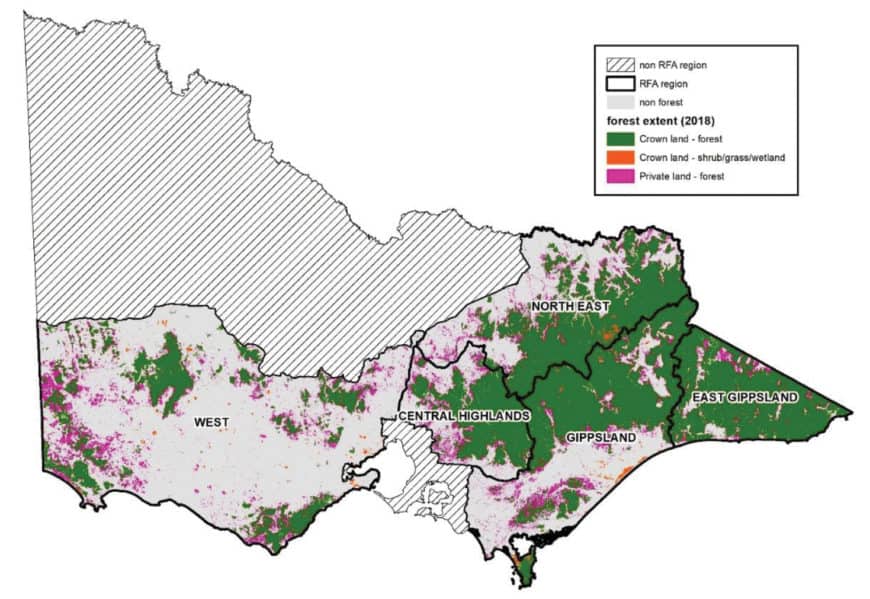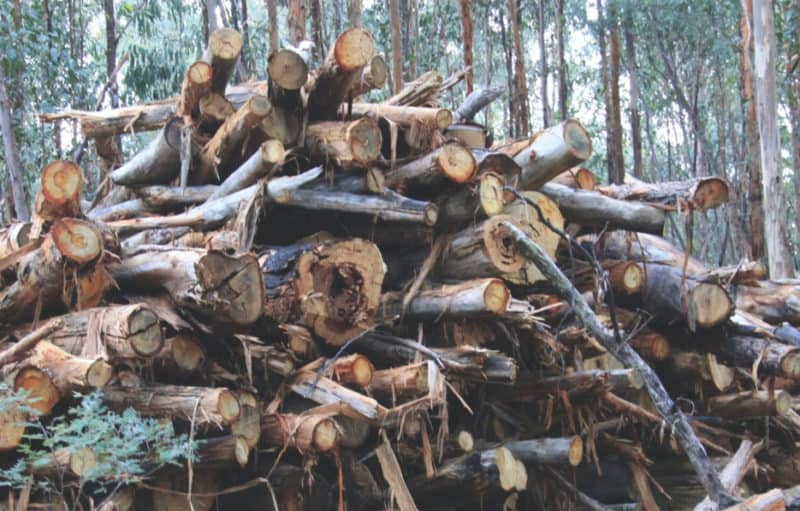PARK WATCH June 2020 |
Amid the COVID-19 shutdowns in early April, the Victorian and Commonwealth governments re-signed their agreement for logging native forests for a further ten years. By Executive Director Matt Ruchel.
While there was little fanfare, all five RFAs (Central Highlands, East Gippsland, Gippsland, North East and West) were renewed to 2030 as part of so-called “modernisation” process.
While expected, it is nevertheless disappointing to see these outdated and ecologically damaging agreements continue.
The RFAs are essentially agreements between the two levels of government to log Victoria’s native forests.
Of ongoing concern is that the “modernised” RFAs still allow the logging of native forests to remain exempt from national environmental laws.
A few extra clauses have been added relating to climate change and also what is called a ‘Major Event Review’.
The Major Event Review allows state and federal governments to undertake a joint review to assess the impacts of major events, like bushfire, flood and disease, in relation to the objectives and operation of the RFAs.
Almost before the ink is dry on the document, a Major Event Review is already being initiated to respond to this summer’s devastating bushfires. The scope of this is still unclear, but there is a clear need for a reassessment of native forests across the whole state, as unburnt areas are now critical for the survival of a range of forest-dependent species.
The fires in Gippsland, East Gippsland and the North East have burnt between 30–90 per cent of scheduled logging coupes, and 40–50 per cent of all areas open for logging in these regions. Ninety per cent of the proposed ‘Immediate Protected Areas’ for Greater Gliders in East Gippsland, which were only announced in November 2019, has now been burnt.
The Andrews Government appears to remain committed to phasing out native forest logging by 2030, starting in 2024. However, the same government continues to argue that RFAs remain the most effective mechanism available to support the transition from native timber harvesting to plantations by 2030. But the agreements do nothing to facilitate change – in fact, they largely lock in existing arrangements. For example, the word “transition” is literally only mentioned once in the “modernised” RFAs, in the statement “Victoria acknowledges that the expansion of Plantation estate will assist in supporting the Timber and Forestry Products Industries to transition out of harvesting State Forest by 30 June 2030…” This makes it rather difficult to reconcile with the claim that the RFAs are a framework for change. There are no clear timelines, steps, or detailed transition plans linked to the renewed agreements.
Over 50 per cent of respondents to surveys undertaken as part of the “modernisation” process wanted native forest protected from timber harvesting. Only 27 per cent of respondents wanted more support for industry and employment. Many reports were generated as part of $17.5 million “modernisation” program, but they did not address any of the core failings of the RFAs, and seemed more of a ‘tick and flick’ paperwork exercise.
The Andrews Government’s commitment to phase out native forest logging by 2030 and manage the transition is outlined in a two-page Victorian Forestry Plan. The plan is allocated $120 million over 30 years (an average of $4 million per year). It includes some payments for “Mills and Harvest and Haulage” and some regional development initiatives starting from 2019, but direct financial support for logging industry workers are only available from 2024 – another election cycle away.
Forestry phase-outs over long periods are tenuous, and have great capacity to fade away unnoticed. Indeed, the Bracks Labor government largely phased out native forest logging in Victoria’s west, assisted by generous transition packages, and also committed to removing the West RFA. Now, not only was the West RFA just renewed for another ten years, but logging is actually increasing in the western region of the state: read all about it here.
Forest extent across Victorian RFA regions (2018)
More
Read next about the return of ‘The wicked Regional Forest Agreement of the west’.
Did you like reading this article? Want to be kept up to date about this and other nature issues in Victoria? Subscribe to our email updates.
You can also receive our print magazine Park Watch four times a year by becoming a member. Find out more here.

